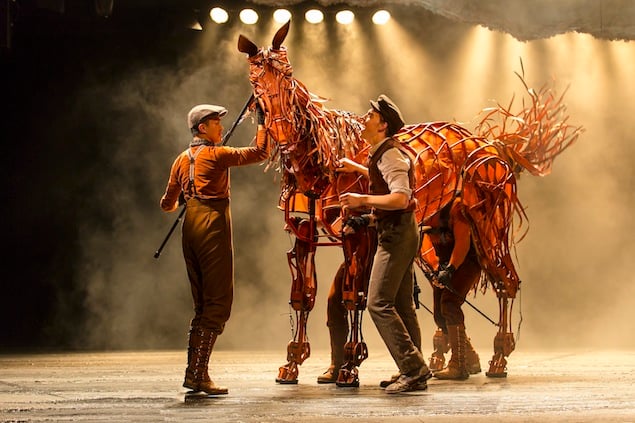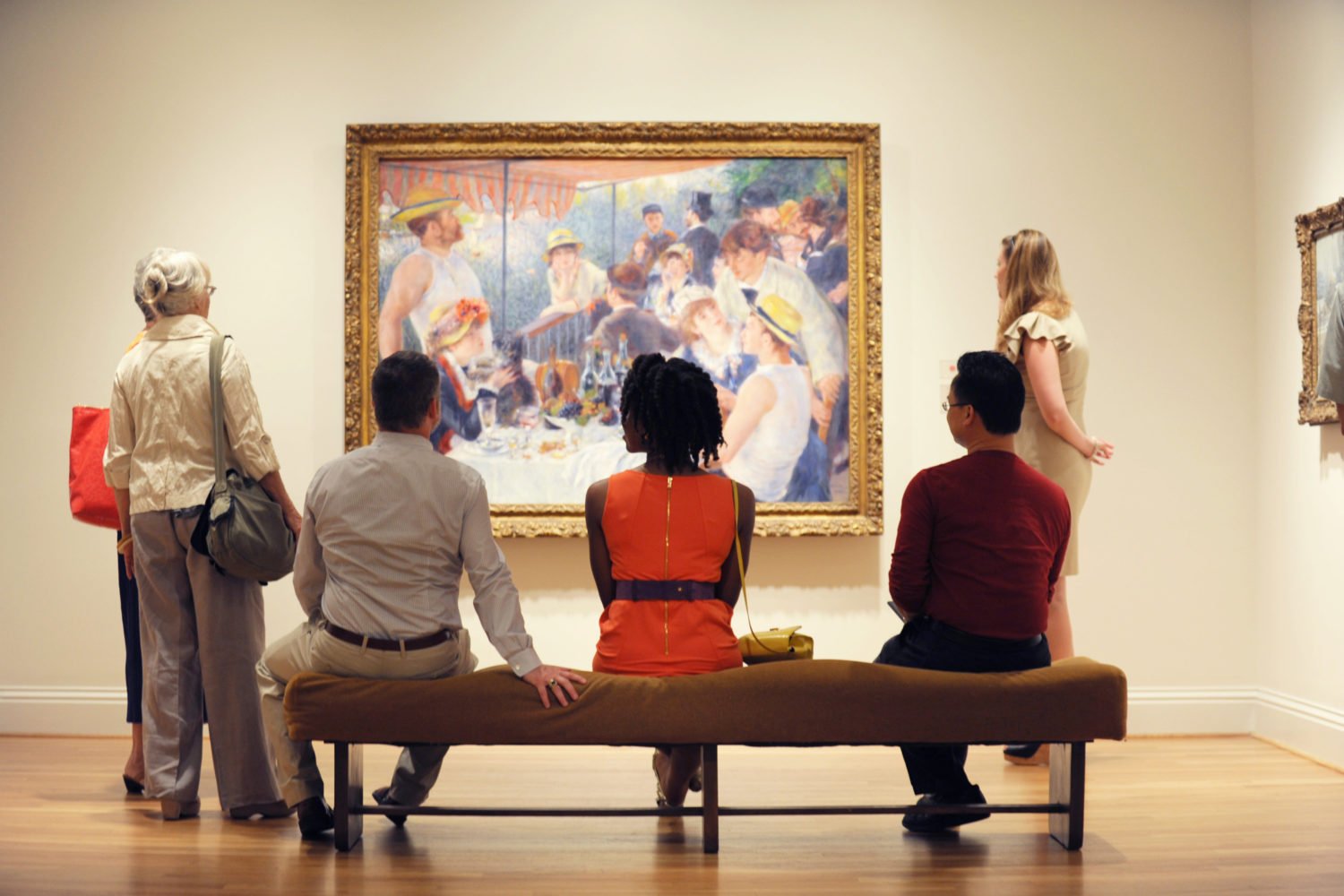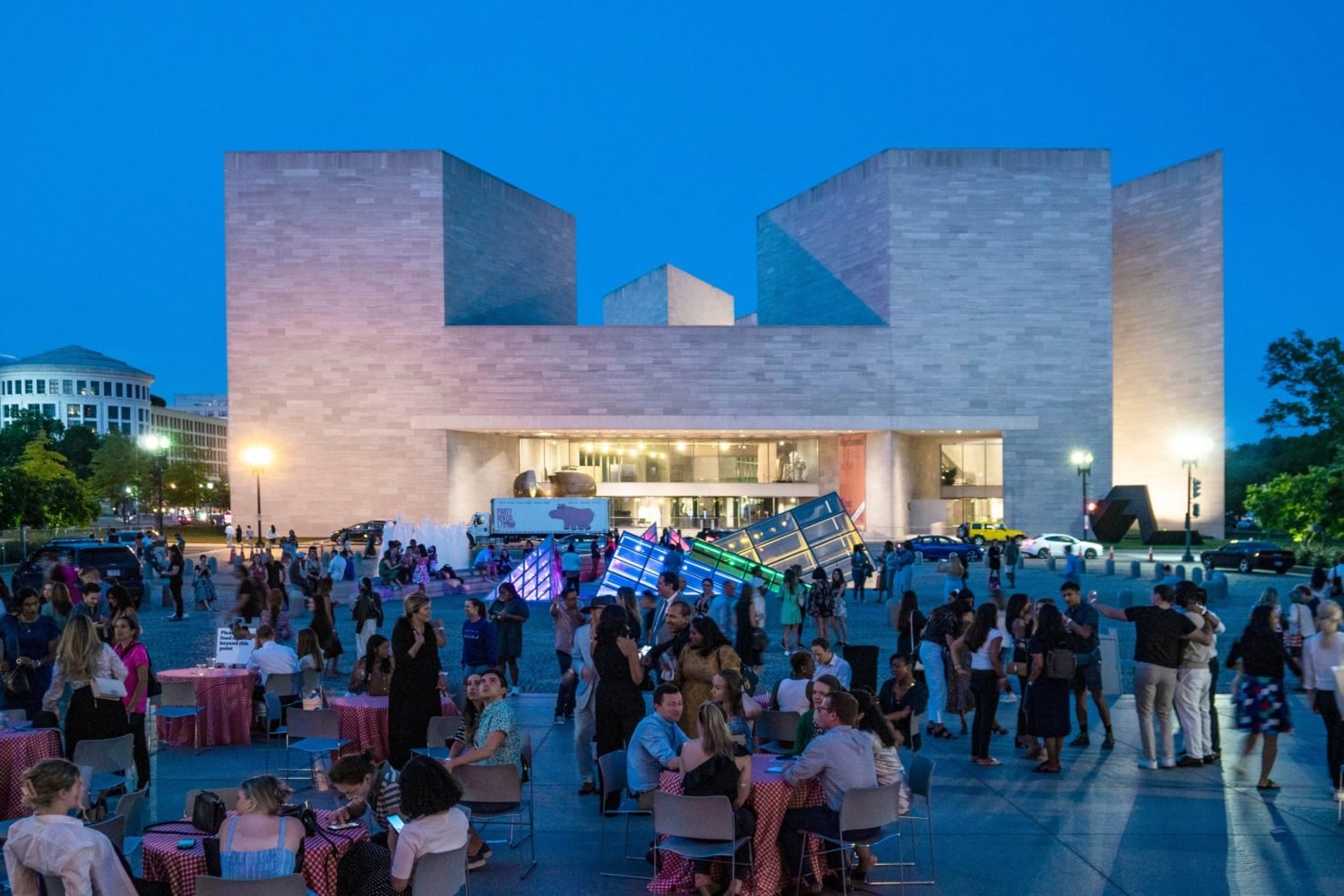
If you watched television at all last year, chances are you saw a trailer for Steven
Spielberg’s
War Horse, a lavish World War I epic complete with swelling orchestral music, sweeping shots
of landscapes in war-torn Europe, and the impassioned cries of a young boy who’ll
stop at nothing to be reunited with his trusty steed.
The stage play
War Horse—itself an adaptation of Michael Morpugo’s 1982 children’s novel—which debuted at
London’s National Theatre five years ago before winning five Tony Awards for its Broadway
run last year, shares some of the schmaltzier elements of the movie, but is redeemed
by its imaginative staging and inventive use of puppetry, created by South Africa’s
Handspring Puppet Company. Currently playing in the Kennedy Center’s Opera House through
November 11, the show tells the story of Albert (Andrew Veenstra), an English boy who loses his beloved horse, Joey, to the 1914 cavalry as it heads
into battle. Spanning the length of the war, Joey’s journey takes him beyond enemy
lines and across Europe, facing the courage and sacrifice of war along the way while
Albert never gives up hope to one day see his friend again.
The human characters in
War Horse are good, not great. In the process of capturing the grandness and tragedy of war,
many roles and relationships can feel underdeveloped and one-dimensional. As Albert,
Veenstra takes some time to build up depth and believability, though the scenes in
which he achieves it are commanding. Other characters charge in and out of the action
with varying degrees of impact.
Alex Morf as Albert’s comrade Private David Taylor, for example, makes the most out of his
brief part with sweetness, humor, and vulnerability, while hard-to-understand (and
sometimes uneven) accents, confusingly similar costumes, and unwieldy storylines keep
many of his castmates from doing the same.
It’s the horses, not the humans, that make this show. Handspring’s shockingly lifelike
puppets breathe, twitch their ears, and rustle their tails under the fascinating and
seamless control of small teams of puppeteers—generally three hidden-in-plain-sight
puppeteers per horse. The actors who operate the full-size animals get top billing
in the show’s program, and with good cause: Each authentic movement communicates not
only breathtaking realism (whoever came up with these contraptions did some serious
horse studying), but raw emotional expression, as well. Scenes that featured just
the horses and no other actors surprisingly felt the most powerful.
Actually, the animals’ beautiful, delicate movements could serve as a valuable lesson
for other elements of the play. The ambitious production works best when it embraces
simplicity and subtlety in favor of the overly theatrical undertones that the movie
enhanced. Haunting live vocals and clean multi-part harmonies are far more arresting
than the blaring orchestral soundtrack meant to hammer home the cost of war. Intimate
exchanges between a few characters or puppets convey stronger messages about the horrors
of battle and the bonds of friendship than the introduction of additional captains,
and corporals, and sergeants. Tackling such larger-than-life subject matter calls
for some bold choices, and when
War Horse makes the right ones, the result is moving.
War Horse
is playing at the Kennedy Center Opera House through November 11. Running time is
about two and a half hours, including one 20-minute intermission. Tickets ($55 to
$175) are available via the Kennedy Center’s website.
















